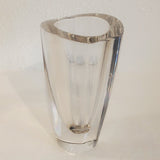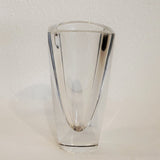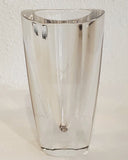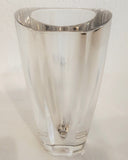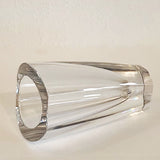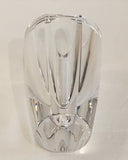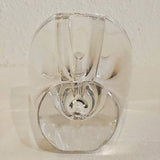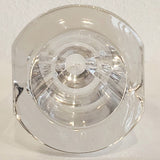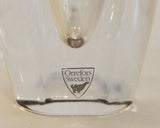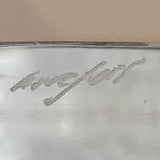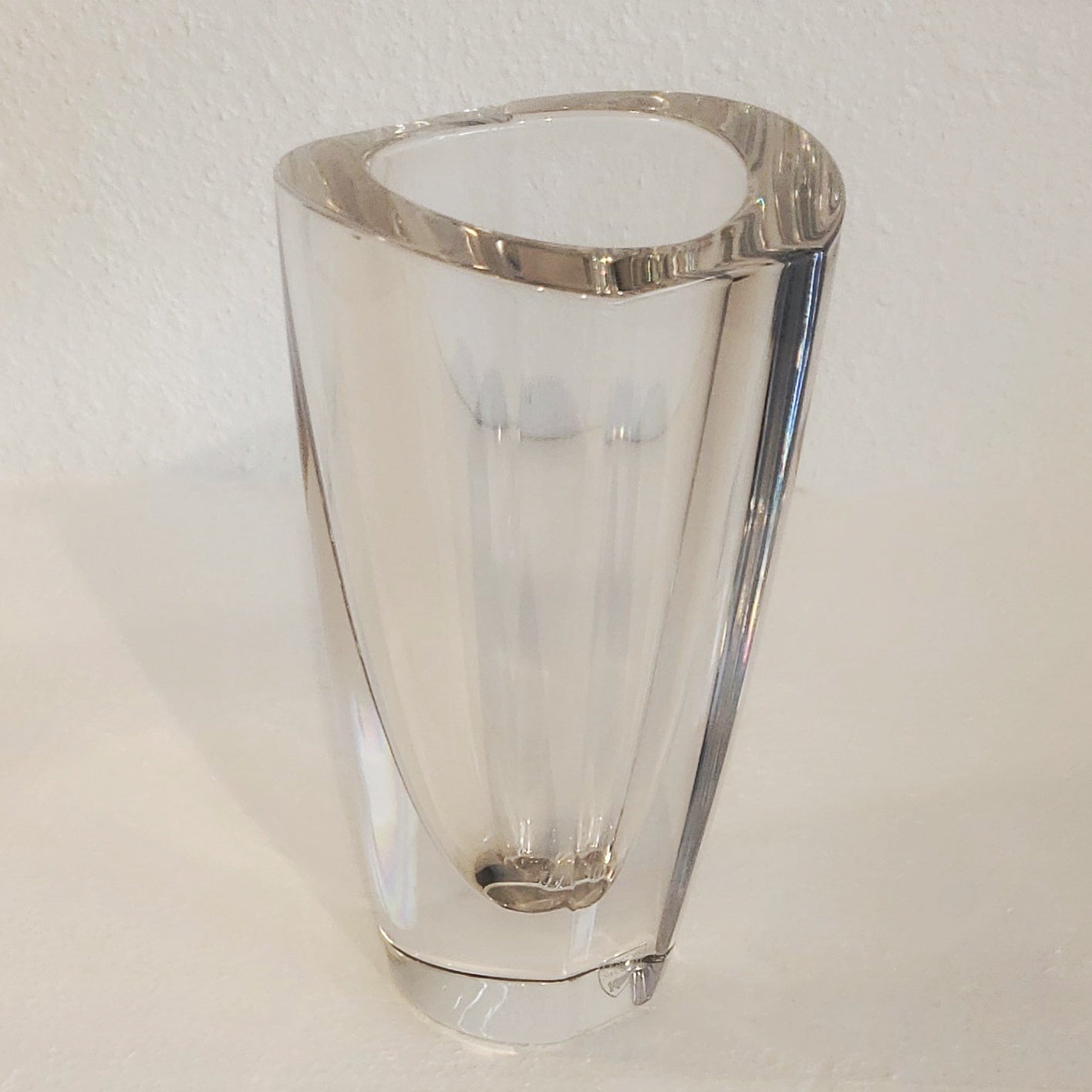
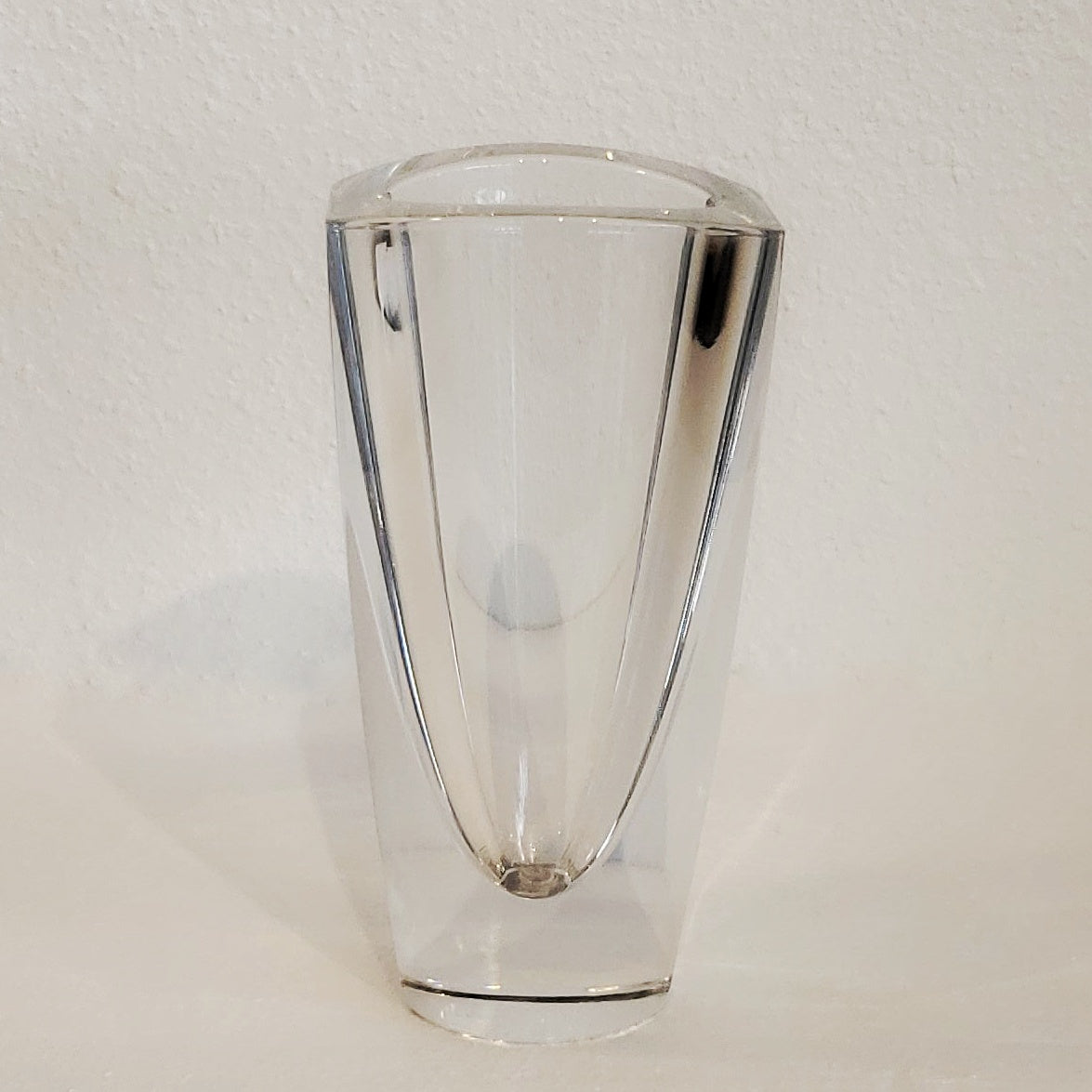
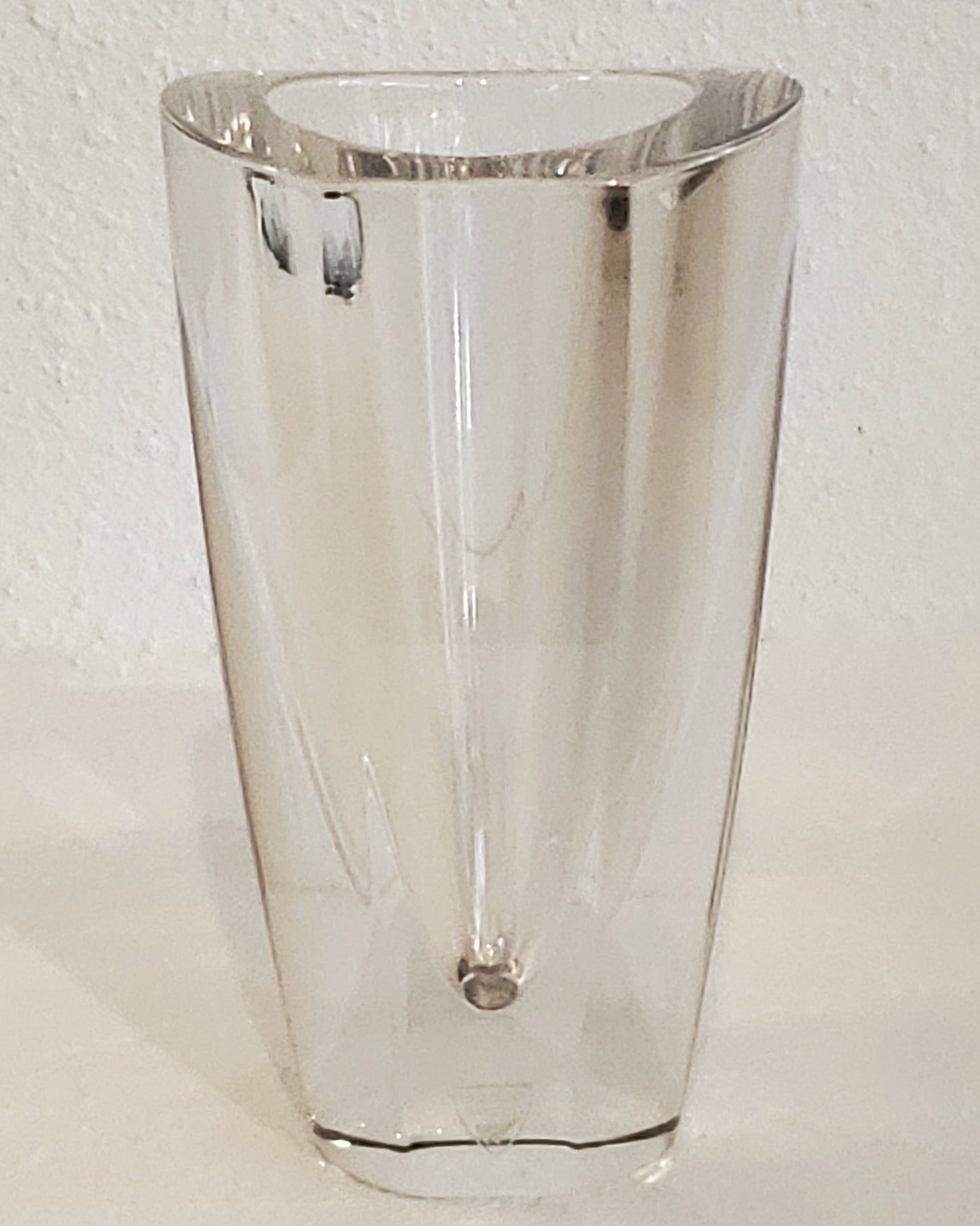
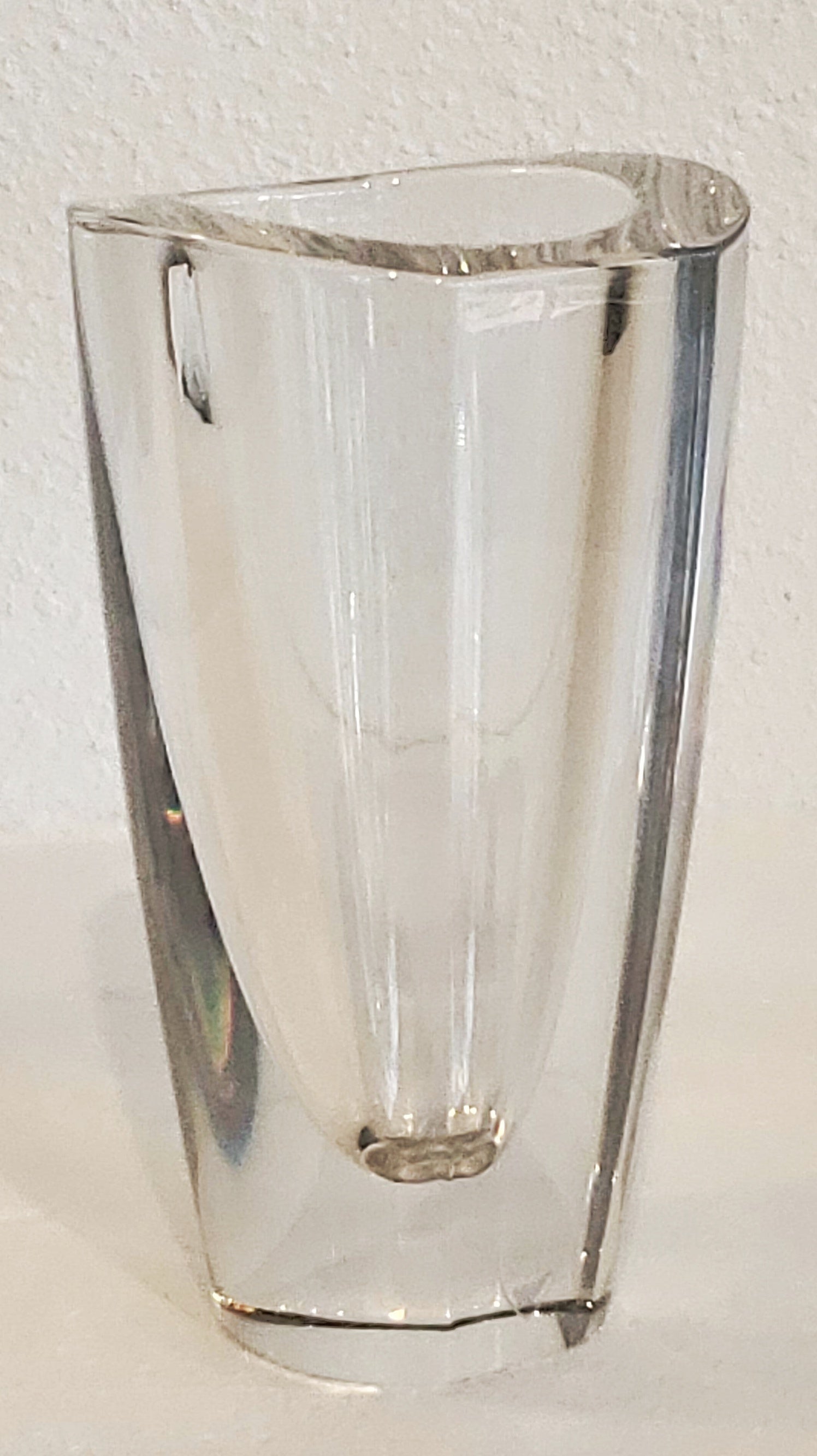
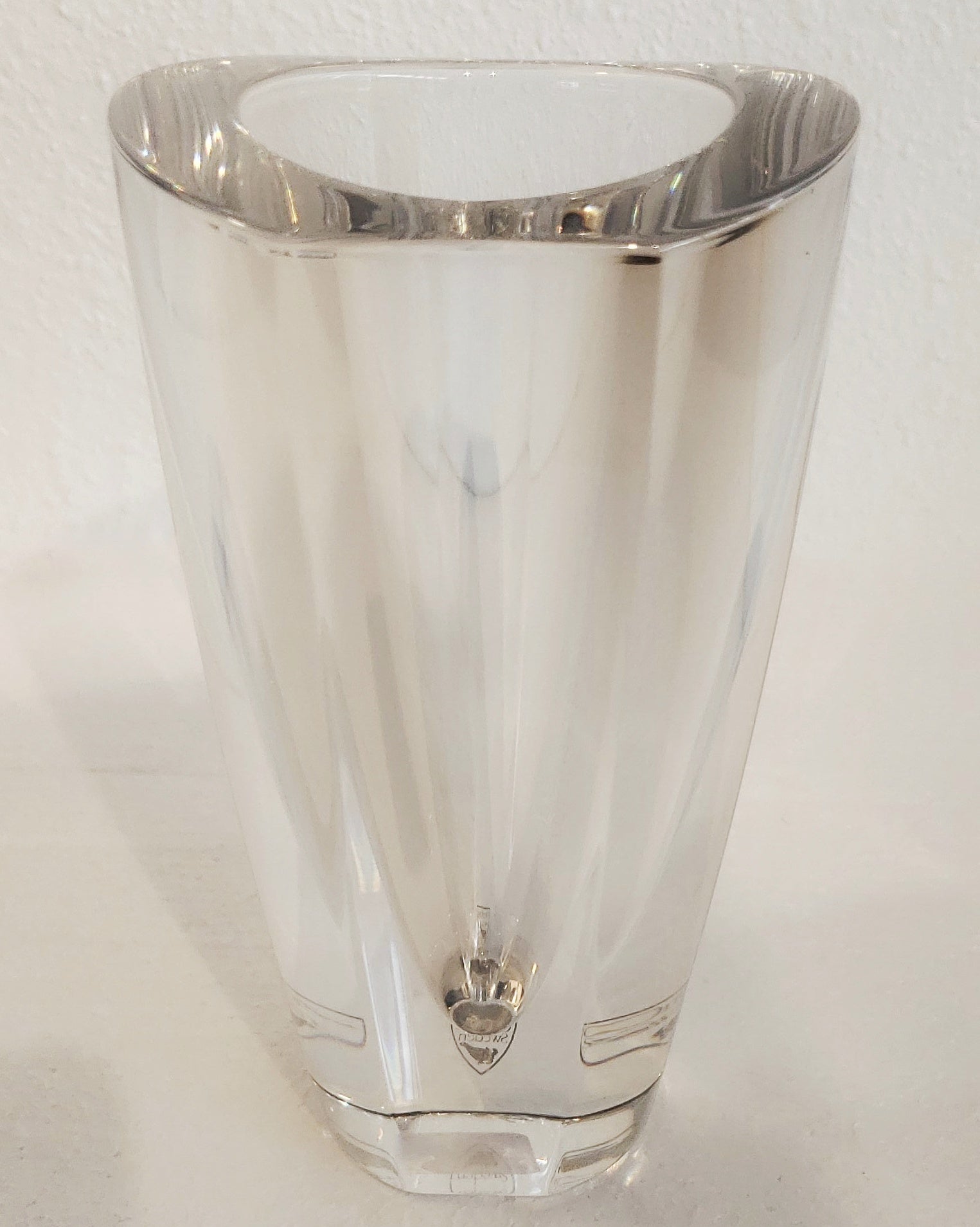
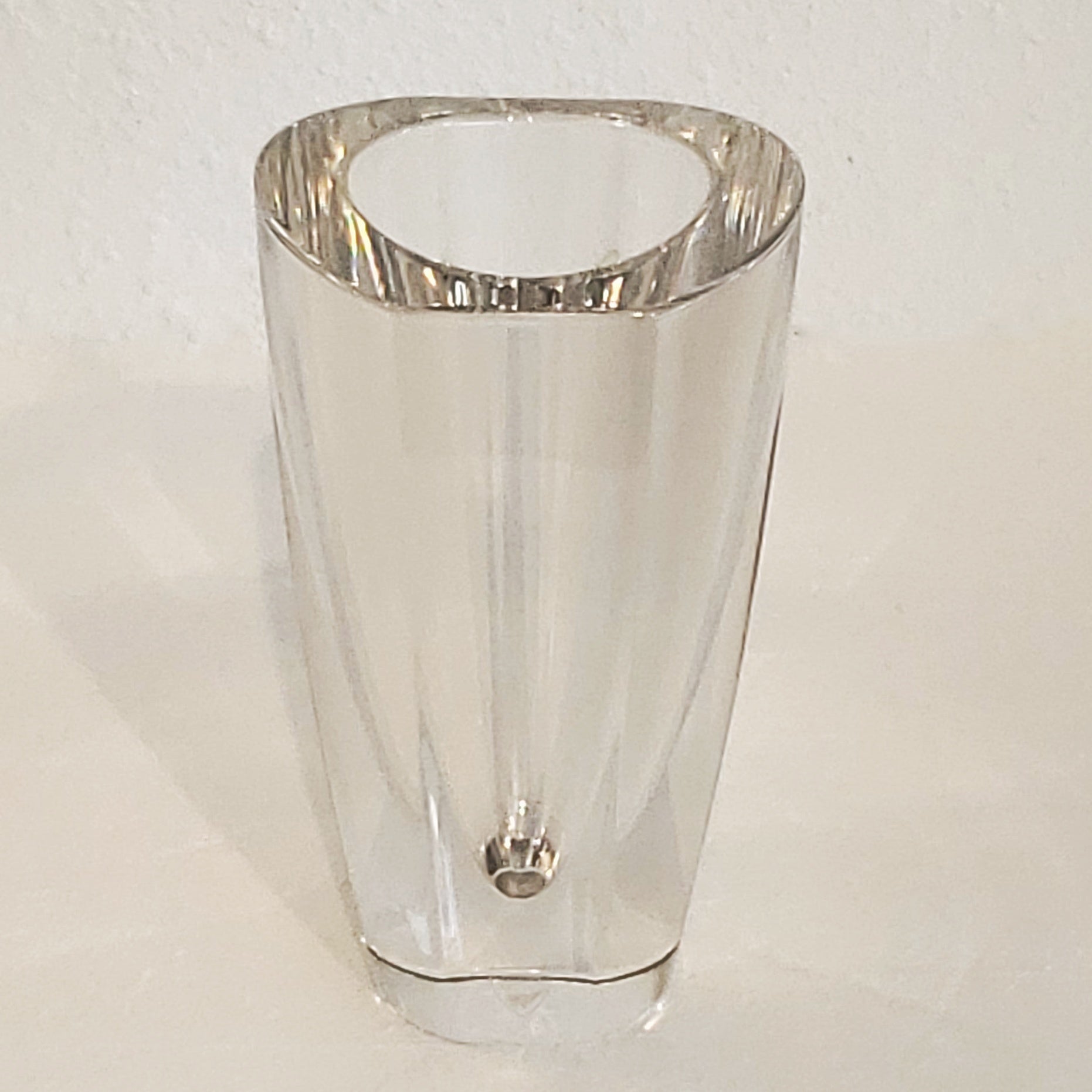
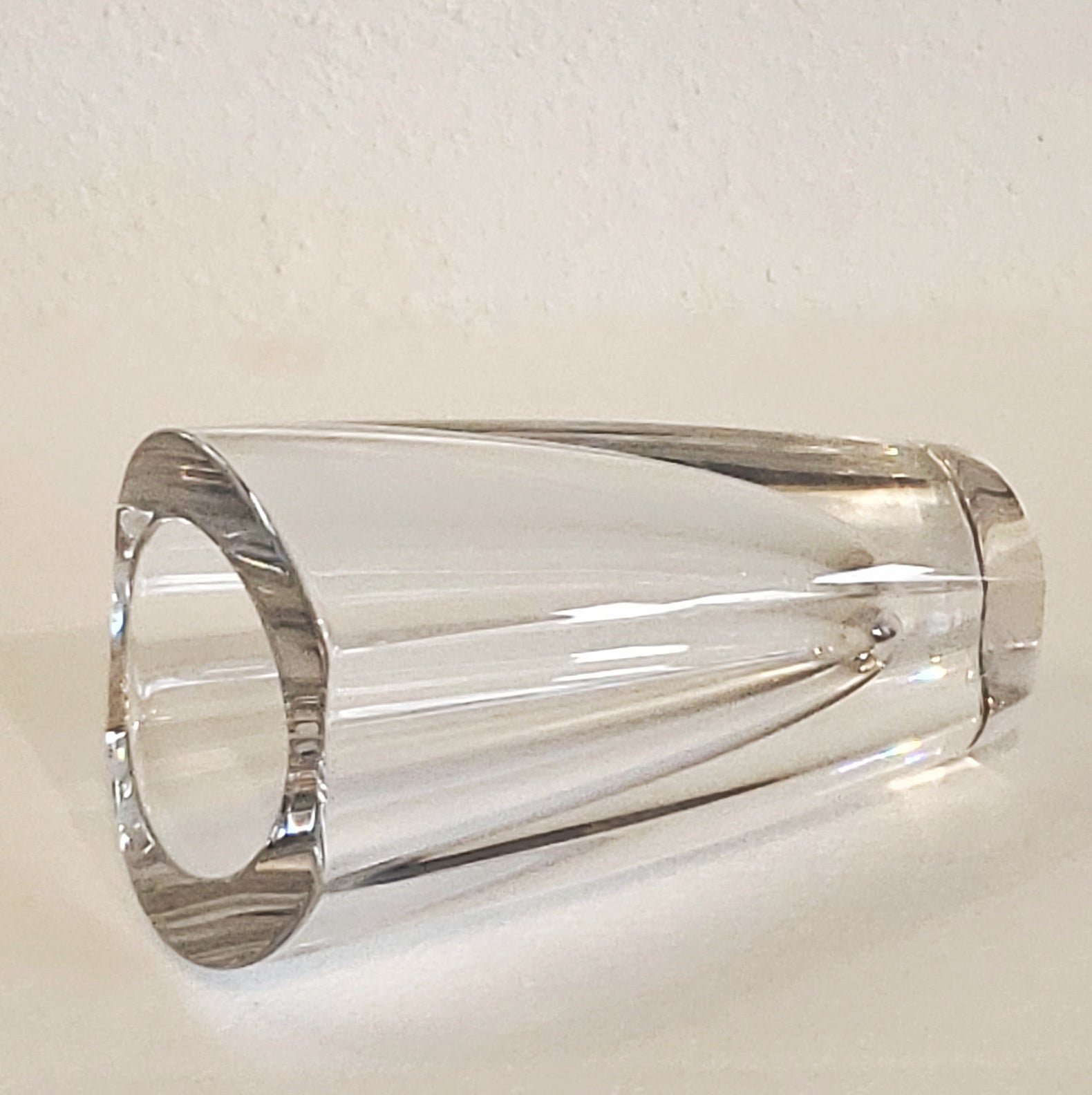
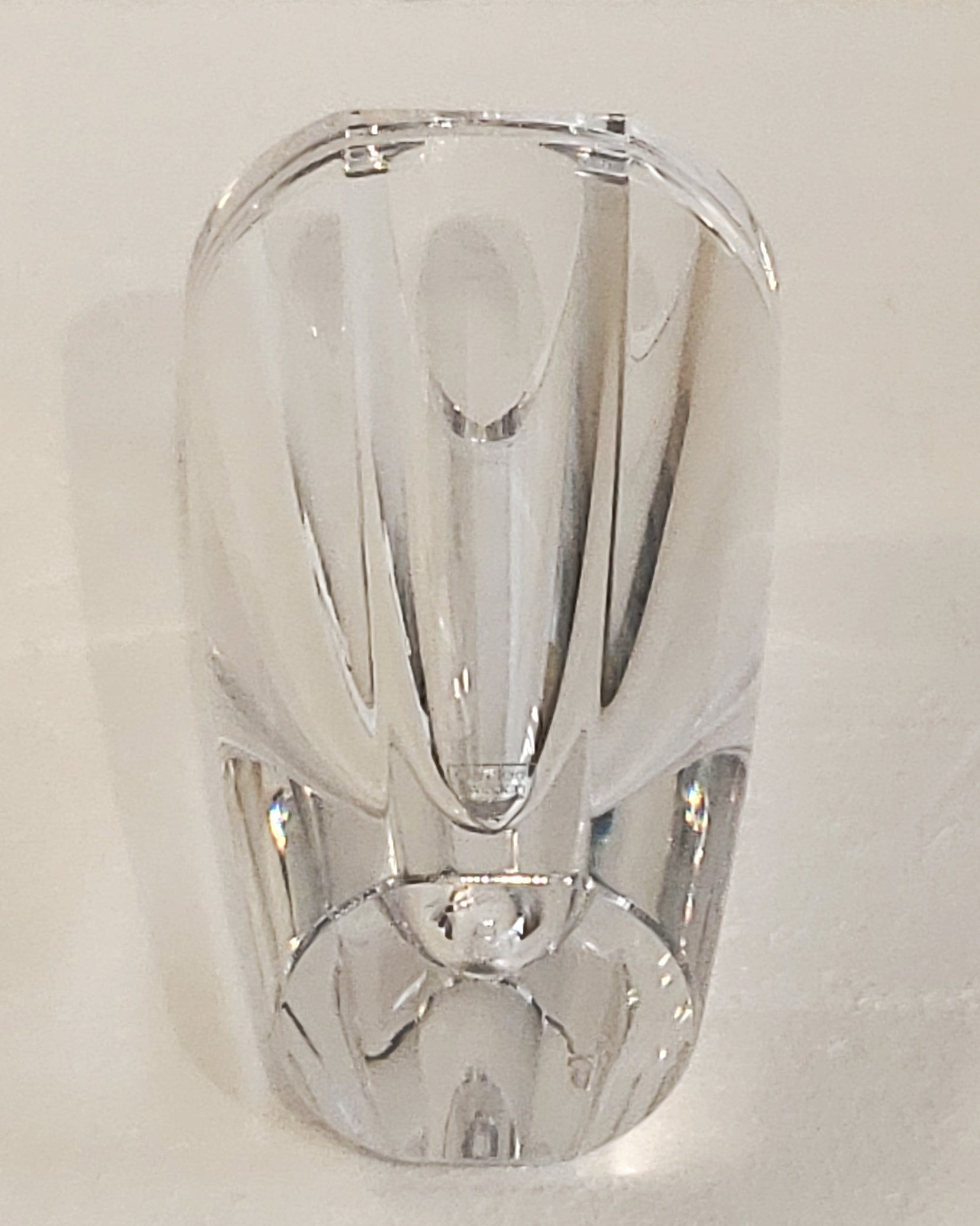
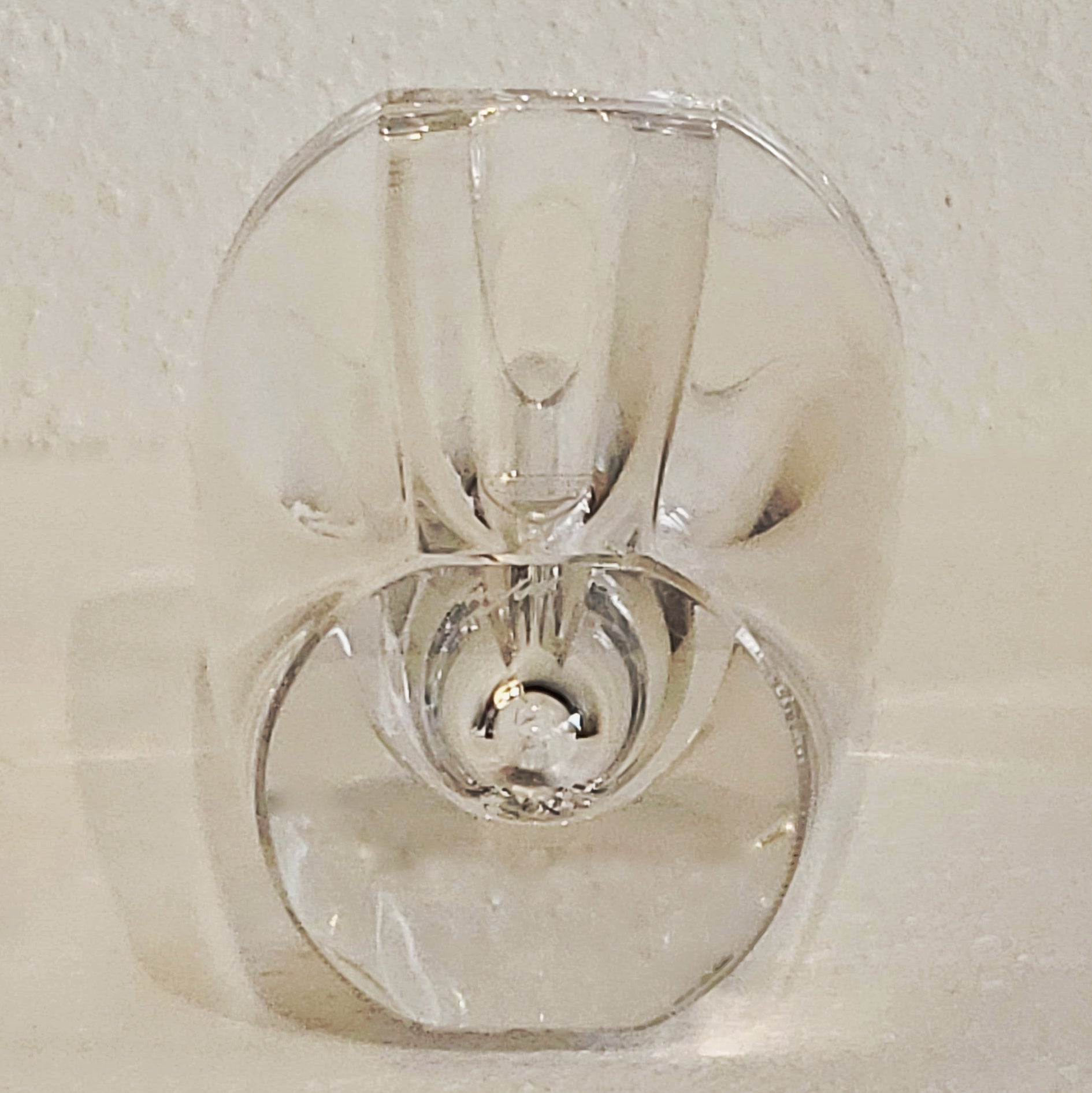
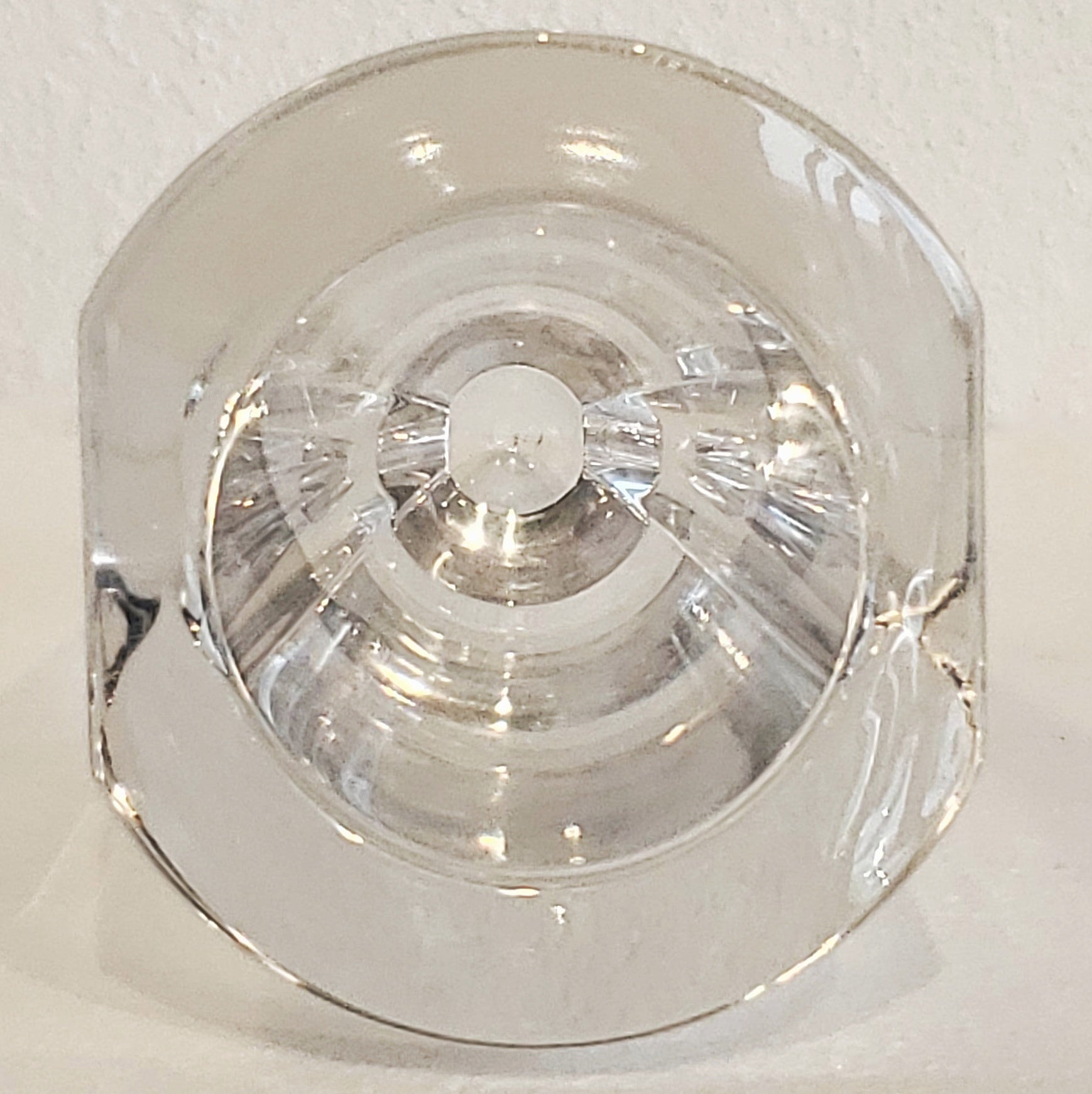
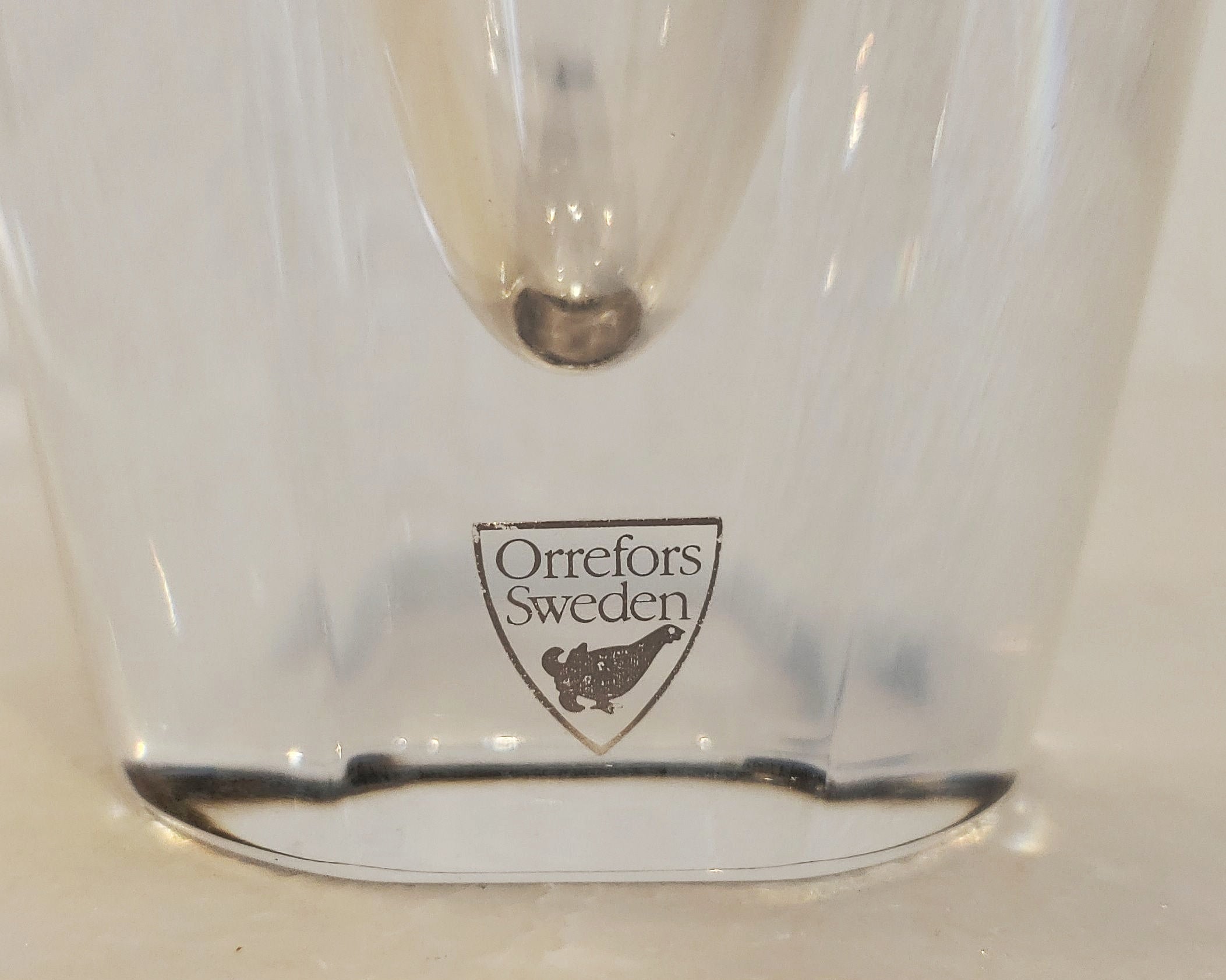
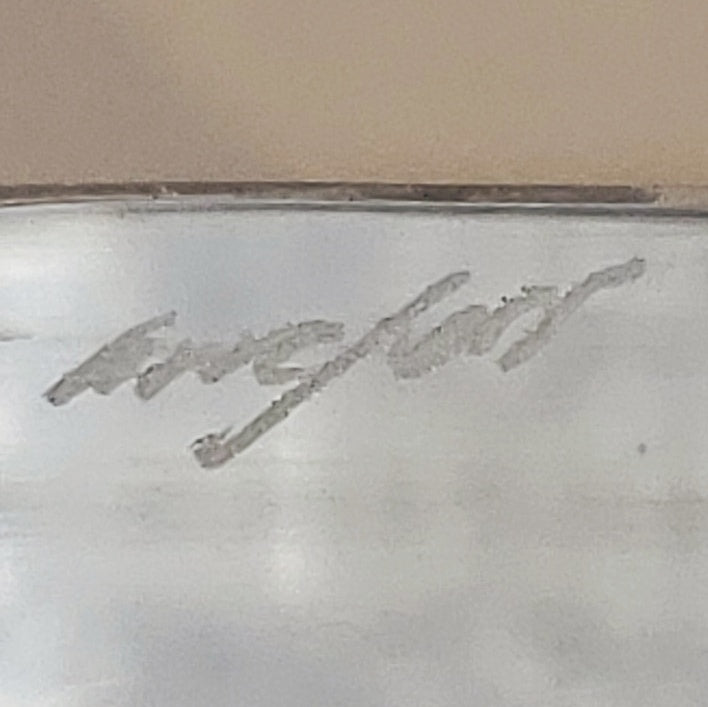
ERIKA LAGERBIELKE ‘MIRROR’ VASE FOR ORREFORS
CONTACT US HERE ABOUT THIS ITEM.
A heavy thick walled lead crystal vase from the 'Mirror" line designed by Erika Lagerbielke for Orrefors Glasbruk, Sweden.
ORREFORS GLASBRUK was founded in 1898 on the site of an earlier ironworks, also named Orrefors, which means 'the Orre waterfall'. It was not until 1913, when the Consul Johan Ekman bought the factory, that Orrefors started to produce things such as drinking glasses, vases and other items. Up until that time, Orrefors mainly produced bottles and glass for windows. Johan Ekman was a wealthy man and also owned a cellulose factory. This was also the reason why he bought Orrefors glasbruk – with the factory he purchased extensive woodlands. Ekman brought in the manager of his cellulose factory, Albert Ahlin, to manage Orrefors. Ahlin hired Oscar Landås, Eugen and Knut Bergkvist (both came from Kosta), Fritz Blomqvist and Heinrich Wollman. The latter came from Bohemia, where there has been a long tradition in (art-)glassmaking. The first attempts at more modern glass were cameo vases in the style of renown French glassworks such as Daum and Gallé. Other Swedish glassworks such as Kosta and Reijmyre already did this for some time. However, the quality of these works was not at all close to the quality of their French counterparts, and soon this copycat behavior was abandoned. By trying to copy their French colleagues, the Orrefors glass workers learned techniques and skills that would serve them in their further development. One of these early developments is the Graal technique that was developed by Knut Bergkvist.
In 1916 and 1917, Simon Gate and Edvard Hald joined Orrefors. These two would have a great impact on Orrefors’ development and their names are still synonymous with Orrefors art glass today. Even though Orrefors produced Graal glass since 1916, this was not done in a large way and almost all Graal items produced until 1920 were unique items. Only from 1920 onwards were some models manufactured in larger numbers – usually up to 50 pieces of the same model or design. However, Orrefors could not maintain a factory based on the sale of Graal glass. In this period, the glassworks earned its money from cut glass. The cut glass produced by Orrefors in this period is characterized by its thinness, something that helps to distinguish early glasses from later ones in the case of some designs that have been produced for many years. The cut glass was engraved using fixed copper wheels which required a lot of skill by the workmen. Orrefors rose to international fame during this period for its engraved glass. The breakthrough came at the Paris Exhibition of 1925. From the Hotel de Ville, the Town Hall of Paris, the Swedish pavilion borrowed a magnificent glass goblet designed by Simon Gate that had been presented as a gift to the City of Paris from the City of Stockholm in 1922. The goblet became a sensation, and the prestigious Grand Prix award was given to Orrefors and its designers. The glassblowers and engravers received gold medals. Many of the imposing glas objects from Orrefors were created for special occasions, or to special order. The motifs in the engraved glass of that period may seem somewhat grandiloquent today, but the technique was consummately realized through skilled craftsmanship and the light, clear quality of the glass.
With the great depression also came a difficult time for Orrefors. Changing ideas about style and design led to a new type of glass that characterized itself by smoothness and simplicity. When the great depression ended, this new style of glass became characteristic for Orrefors. Examples of this style are vases that are thick-walled and have a black foot. The glass of these thick-walled vases almost looks as smooth as flowing water and gives the viewer the idea of an organic type of glass. The thickness of the glass of this period is a stark contrast to the earlier finesse that characterized Orrefors’s glass.
Vicke Lindstrand joined Orrefors in 1928 and stayed there until 1940. Lindstrand made some famous examples of the above mentioned thick-walled, smooth vases in which the engraving seemed to “float”. A well-known example are the Pearl Diver vases.
Both Sven Palmqvist and Nils Landberg were students at the Orrefors glass school and were accomplished engravers. They would become very significant designers for Orrefors from the 1940s onward. These two designers are responsible for a whole range of well-known styles and techniques such as the Stella Polaris range, Kraka, Ravenna and Fuga (also sometimes called Colora), and the Tulpan range.
In the mid-1930s, Edvard Hald developed the Slip-graal technique. This technique is based on the Graal technique that was developed by Bergkvist almost twenty years earlier. The main difference is that the motif is engraved, rather than etched using acid. The most famous example of this technique are the so-called fish-graal vases. Hald’s idea was that the finished vases would look like aquaria. These types of vases are so popular that they were still being produced up until 1989, when it was decided to only produce designs from contemporary designers.
Edvin Öhrström, a sculptor by trade, joins Orrefors in 1936. Together with Lindstrand he developed the Ariel technique. This new technique is based on the Graal technique and was developed more or less by accident, when they noticed that in certain cases air bubbles developed when the thicker, colorless glass, encased the colored design. At first, both Öhrström and Lindstrand worked in this technique, but later it was used almost exclusively by Öhrström until Ingeborg Lundin joined Orrefors in 1947.
Ingeborg Lundin joined Orrefors in 1947. She was the first female designer to do so. Together with Edvin Öhrström she worked on the Ariel technique and later became famous for her Äpple, which is basically an oversized apple that she made in clear glass for the 1957 Triennale in Milano. Both Lundin and Landberg won prizes in Milano in 1957, Lundin for her Apple and Landberg for his Tulip glass. The ambition for all glass from Orrefors was the highest possible quality and exquisite design. This is the same objective that applied so many years ago, when Johan Ekman traveled the long road through the forest, past the quiet farms behind their stonewalls...
In 1990 Orrefors and Kosta Boda merged to form Orrefors Kosta Boda AB, and in 2005 the glassworks were sold to New Wave AB, a company that focuses on lifestyle and design. New Wave AB decided to close the Orrefors glassworks at the end of 2012, giving lack of profitability as the main reason.
| Designer | ERIKA LAGERBIELKE |
|---|---|
| Manufacturer | Orrefors |
| Design Period | 1980 to 1989 |
| Production Period | Unknown |
| Identifying Marks | This piece has an attribution mark |
| Style | Scandinavian Modern, Hand-Crafted, Modernist |
| Detailed Condition | Excellent — This vintage piece is in near original condition. It may show minimal traces of use and/or have slight restorations. |
| Product Code | |
| Materials | Lead Crystal |
| Color | Clear |
| Width | 4.0 inch |
| Depth | 3.5 inch |
| Height | 6.8 inch |

